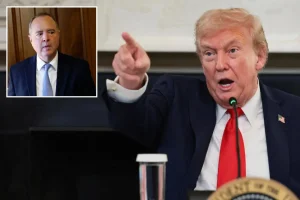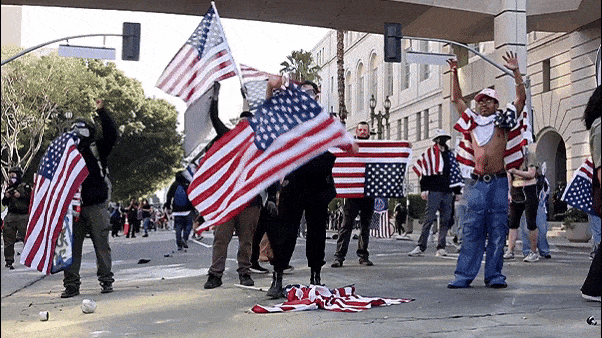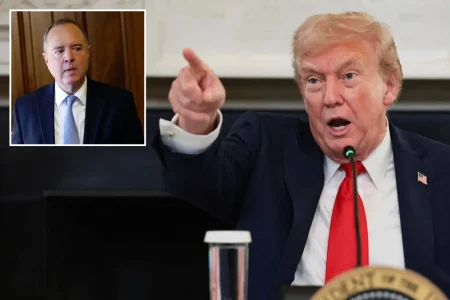The Business of Protest: How America’s Demonstration Culture Faces Exploitation
In an era of heightened political tensions, America’s tradition of public protest is increasingly vulnerable to manipulation by profit-seeking operators and foreign entities looking to deepen national divisions. Adam Swart, CEO of Crowds on Demand, a company that has been at the center of this evolving landscape, warns that what once represented authentic civic expression has transformed into an industry ripe for exploitation. “My concern is that there are forces — some domestic, some maybe foreign — that actually want to pull America apart,” Swart told Fox News Digital. “These aren’t left or right actors. They’re people making money off chaos.” His candid assessment comes from firsthand experience in a field where he’s witnessed the commodification of public outrage and the blurring lines between genuine activism and performative demonstration.
The upcoming “No Kings” protest scheduled for October 18 exemplifies Swart’s concerns about the modern protest ecosystem. Organizers claim the nationwide demonstration aims to denounce political elitism and government overreach, with expectations of massive turnout comparable to their previous events that allegedly drew millions. Swart’s company declined involvement, dismissing it as “a dud in the making” and “political theater” unlikely to achieve meaningful change. A spokesperson for the “No Kings” movement rejected this characterization, emphasizing their commitment to nonviolence and extensive security preparations, describing their efforts as part of “a proud American tradition” of peaceful civic demonstrations. This exchange highlights the fundamental tension in contemporary protest culture—between those who see demonstrations as essential democratic expression and others who view them as increasingly theatrical and potentially exploitable performances.
What troubles Swart most is the emergence of what he calls a “protest industry”—a network of consultants, organizers, and social media influencers who have built careers and revenue streams around political outrage. According to Swart, many modern demonstrations function less as grassroots expressions of public sentiment and more as “performative activism” designed to attract funding, followers, or online engagement. This shift has led his company to become more selective about the causes they support, declining contracts he views as divisive or volatile. “I’ve taken a pay cut to turn this into a company that advances common-sense causes,” he explained. “I could make 10 times more if I said yes to everything. But I don’t want to be part of the noise.” This self-imposed restraint reflects his growing concern about how public demonstrations can be co-opted by those with ulterior motives, including foreign actors seeking to sow division in American society.
The opacity surrounding who actually orchestrates and funds many modern protests presents a particular danger. Swart warns that interest groups or even foreign entities can create networks that mirror legitimate advocacy organizations—sometimes legally, sometimes not—to obscure their involvement. “I know how you’d structure a web of advocacy groups legally—and how someone could mirror that illegally,” he said. “I want to help the government figure out who’s funding the division and shut it down.” His comments align with U.S. intelligence warnings about foreign actors—particularly Russia, China, and Iran—using disinformation to amplify divisive narratives and potentially spark unrest around significant political events. This international dimension transforms what might appear as domestic political expression into a potential national security vulnerability, with implications that transcend partisan politics.
Social media platforms bear significant responsibility for the degradation of protest culture, according to Swart. He argues that major platforms like Facebook and X (formerly Twitter) profit directly from the polarization and outrage that drive engagement. “They only make money when you’re doom-scrolling,” he observed. “If people liked each other, Facebook and X would be a tenth of their size.” This business model incentivizes conflict and division regardless of political orientation. “People try to label Elon Musk and Mark Zuckerberg politically, but both make money off division. It’s not about right or left—it’s about engagement.” This economic reality creates a feedback loop where social media algorithms reward the most inflammatory content, driving further polarization and making authentic dialogue increasingly difficult. The result is a protest landscape where generating viral moments of conflict often takes precedence over substantive advocacy or coalition building.
Despite these troubling trends, Swart maintains hope that increased awareness and transparency can help reclaim protest as a constructive democratic tool. He frames America’s growing division not merely as a political problem but as “one of the greatest national security threats that we face,” with sources that are “far more sinister” than partisan disagreements. The solution, in his view, requires redirecting protest energy toward purpose rather than performance, and focusing more on what unites Americans than what divides them. “The protest space has to be about purpose again,” he emphasized. “If we don’t figure that out, we’re going to keep getting played by the people who thrive on conflict.” Swart’s parting advice—”Punch up, not down. Let’s stop finger-pointing and start coalition-building”—suggests a path forward that honors America’s protest tradition while resisting its exploitation by those who profit from division. The challenge now is whether enough Americans across the political spectrum can recognize these dynamics and reclaim public demonstration as a tool for positive change rather than profitable chaos.










